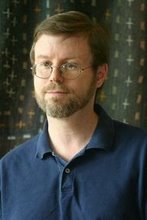It’s been fascinating to me to uncover nuggets of my family’s history in the 1918 book The Wisners in America — but it may not be of much interest to anyone else whose name isn’t Wisner. My apologies to the non-Wisners out there. The book begins with the arrival of the first Wisner:
Johanes Weesner, of Switzerland, was the progenitor of most of the Wisners now living in this country. He came to America about 1714 (the exact date has not been established nor is it of much importance), with 10,000 troops of Queen Anne’s Swiss contingent, who had fought against Louis XIV, of France, under the Prince of Orange, and later under the Duke of Marlborough.... Perhaps the most reliable information we have about Johanes Weesner is contained in “A Memorial to Henry Wisner,” published by Franklin Burdge, of New York, in September, 1872.... It will be noted that Burdge says: “Johanes Weesner was born in Switzerland and fought against Louis XIV, of France, in the allied army under the Prince of Orange, and afterwards under the Duke of Marlborough. When their warlike toils were done, Queen Anne undertook to provide some of the foreign troops a home in the colony of New York. “The emigrants encamped for some months on Governor’s Island. Then Johanes Weesner went to work on the farm of Christian Snedicor, of Hampstead, Long Island. Snedicor owned land on the Wawayanda Patent, in Orange county, and he sent Weesner there to bring part of it under cultivation. By paying 30 pounds Weesner became the owner of a farm on July 23, 1714. It is supposed the situation is the present town of Warwick, near Mount Eve, on the border of the Drowned Lands. The district was called Florida as early as 1733. Johanes Weesner died a little before May, 1744.”The book goes on:
That Johanes Weesner was a thrifty and industrious man, and with the hearty co-operation of his family, accumulated considerable property for those days, thus displaying shrewd intelligence and fine judgment is indicated clearly in his will... It reads: “In the name of God, Amen, I, Johanes Weesner, of Florida, in Goshen, in Orange county, yeoman, this July 6, 1733, I leave to my eldest son, Hendrick, 30 pounds. I leave to my son, Adam, my dwelling house and land I now live upon, with all the buildings; and he is to pay to my son Hendrick the 30 pounds above mentioned. I leave to my youngest daughter, Mary, now living with me, 140 acres of land, which I purchased of Barent Bloome, June 7, 1732, situated in Orange county, near Goshen, as by deed. “After payment of debts, I leave to my three daughters, Catharine, wife of Thomas Blain, Ann, wife of Philip King, and Mary, all the rest of my personal estate. “If my dear and loving wife, Elizabeth, should survive me, she is to have the use of all my estate, and no division is to be made during her life. I make my wife Elizabeth, and my good and trusty friends, Michael Dunning and Daniel Denton, both of Goshen, executors. “Witnesses, John Smith, Joseph Sutherland, Josiah Keeder. Proved in New York, May 19, 1744.”Hendrick’s son Henry Wisner, the grandson of Johanes Weesner, later became a member of the First and Second Continental Congresses, and the only New Yorker to vote for the Declaration of Independence.



No comments:
Post a Comment